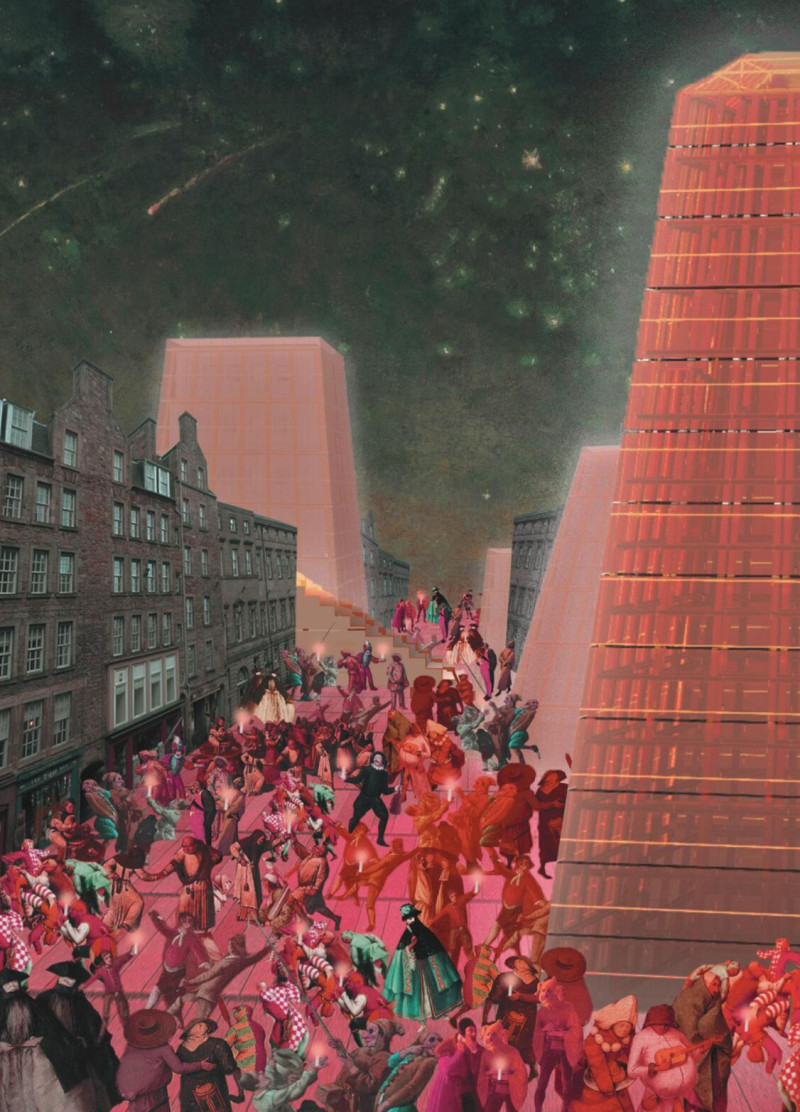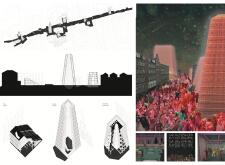5 key facts about this project
The design integrates varied architectural forms, suggesting a deliberate approach to enhancing the urban fabric. Through careful planning, the project creates a seamless transition between built forms and the surrounding environment. It establishes a narrative that connects different areas, encouraging movement and interaction among users while creating visual landmarks that become part of the city's identity.
One of the key features of the project is its multifunctional spaces, designed to accommodate various activities and uses. These areas may serve for community gatherings, markets, art displays, or casual socializing, embodying a spirit of inclusivity and engagement. The layout is intentionally crafted to invite public interaction, offering open spaces that encourage pedestrians to explore and enjoy. Through such thoughtful design, the architecture embodies a commitment to enhancing the urban experience, showcasing how thoughtful planning and design can invigorate public life.
Materiality plays a crucial role in conveying the project’s intentions. A combination of glass, steel, concrete, and wood has been meticulously chosen to balance transparency, structural integrity, and warmth. The use of glass allows natural light to permeate indoor spaces, creating a vibrant atmosphere that reflects the lively context outside. Steel provides the necessary strength while contributing to a sleek appearance that complements the surrounding historical architecture. Concrete remains integral in formulating structural components, supporting the innovative design while allowing for expansive, open interiors. Additionally, wood elements might be included to create warmth and comfort, establishing a welcoming environment for users.
The architectural detailing demonstrates an attention to form and function. The facades exhibit dynamic geometries, with variations that create visual interest while enhancing functionality. The interplay of solid and voids allows for effective light manipulation, contributing to an inviting ambiance, both day and night. Unique architectural expressions in the design not only elevate the project aesthetically but also serve operational purposes, such as improving natural ventilation and providing shading in outdoor areas.
This project is remarkable in its approach to adaptive reuse, effectively integrating new structures within existing historical frameworks. Such a strategy not only preserves the cultural integrity of the site but also reinforces social cohesion by maintaining familiar landmarks while introducing contemporary designs. This dialog between historical preservation and modern needs indicates a nuanced understanding of urban development, setting a standard for future projects.
The unique design strategies employed in this project highlight the importance of environmental consciousness in contemporary architecture. The choice of materials and construction techniques consider sustainability, potentially incorporating green technologies that enhance the overall environmental performance of the building. These initiatives reflect a growing awareness within architecture to respond to ecological challenges while providing functional and attractive built environments.
This project stands as a testament to the evolving nature of urban architecture, responding to the complex needs of contemporary society. It illustrates how well-designed spaces can encourage community interaction, foster sustainable practices, and respect historical context. To delve deeper into this architectural endeavor, readers are encouraged to explore the architectural plans, sections, designs, and ideas presented, gaining further insights into its comprehensive approach and thoughtful execution.























